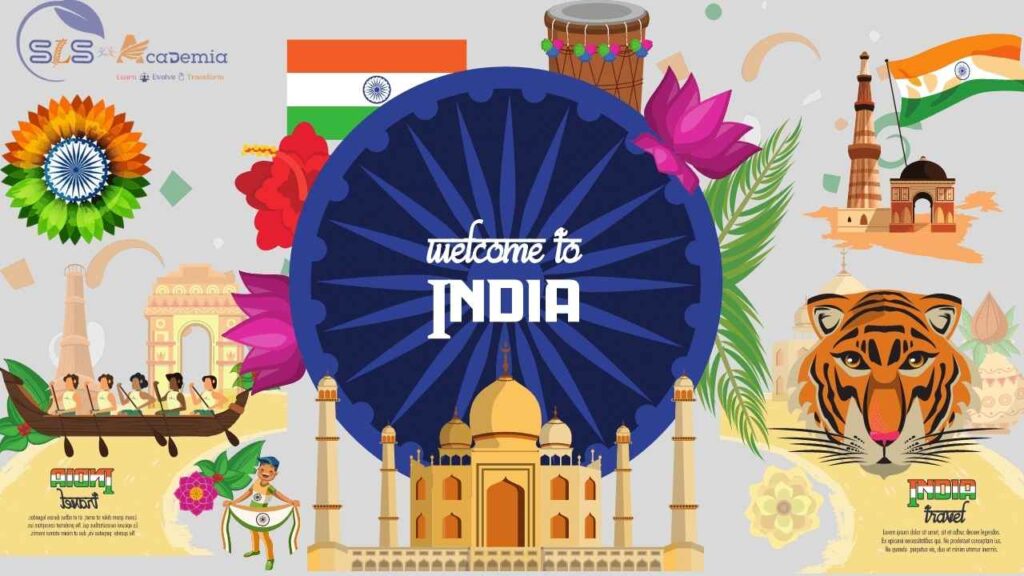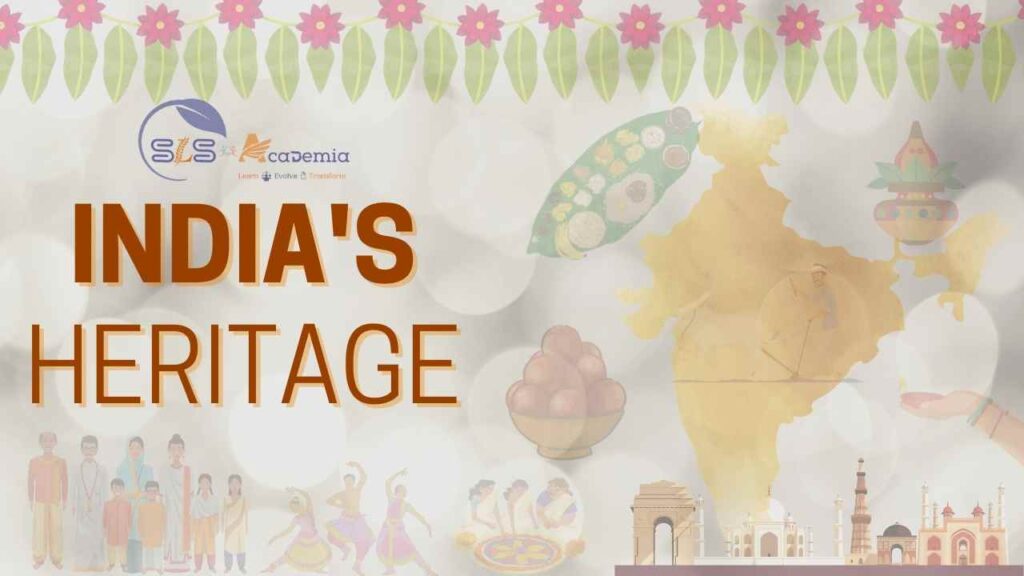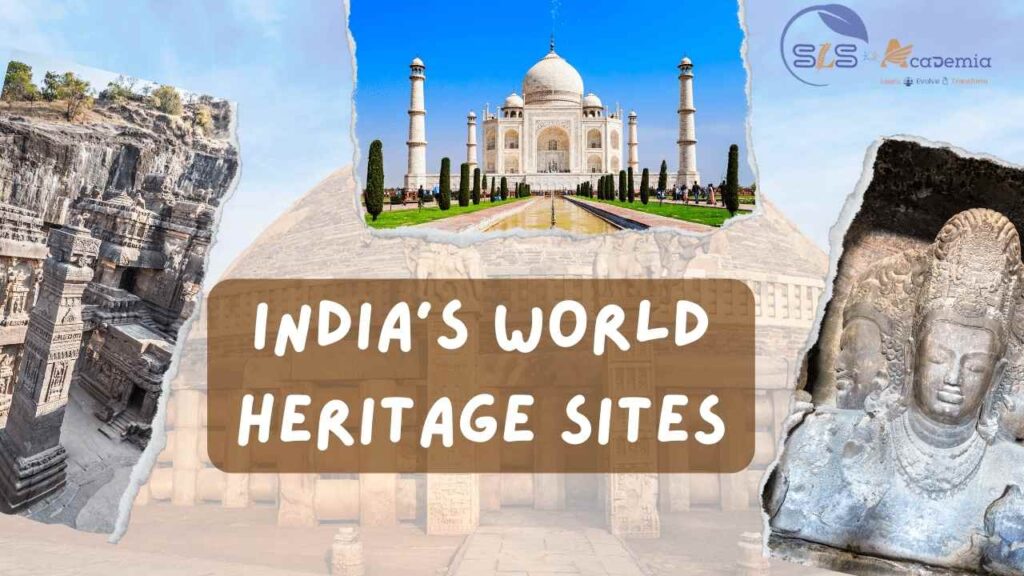Discovering the Rich Cultural Heritage of India: A Journey Through Time
India, a land of diverse cultures and traditions, boasts of a rich and storied heritage that has been shaped by centuries of invasions, conquests, and religious influences. The country’s cultural tapestry is a testament to its secular philosophy and the harmonious coexistence of its people. In this article, we delve into the depths of India’s heritage and take a journey through time to explore its rich history and cultural diversity.
The Ethnicity of India
The ethnicity of India is one of the country’s defining characteristics and is a result of its rich and diverse history. India is a melting pot of different religions, cultures, and traditions, which have come together to create the unique and diverse ethnicity of the country. From the ancient Indus Valley Civilization, to the Mughal Empire, the British Raj, and the modern-day Republic of India, the country has been shaped by the influences of many different cultures and civilizations.
The mix of different religions, cultures, and traditions in India is what makes the country’s ethnicity so rich and diverse. Hinduism, Islam, Christianity, Buddhism, and Sikhism are some of the major religions in India, each with its own distinct cultural traditions, beliefs, and values. The country is also home to a vast array of linguistic, ethnic, and regional communities, each with its own unique cultural heritage.
The role of ethnicity of India in shaping India’s heritage is significant, as it has contributed a lot to the country’s rich and diverse cultural landscape. From the intricate architecture of the temples, to the colourful festivals and celebrations, the musical and literary traditions, and the handicrafts and textiles, India’s heritage is a reflection of the mix of different cultures and traditions that have come together to create the unique ethnicity of the country.

A Journey Through Time: Visit India's Heritage Sites
From the ancient ruins of the Indus Valley Civilization to the grand architecture of the Mughal Empire, India is home to a wealth of heritage sites. Whether you’re a history buff or simply looking to explore India’s rich cultural heritage, a visit to these sites is a must. So, come and join us on a journey through time as we discover the rich heritage of India.
The Indus Valley Civilization: A Cradle of Ancient Culture
India’s rich heritage can be traced back to the Indus Valley Civilization, which flourished in the northern regions of the subcontinent around 2600 BC. The civilization, which was one of the world’s first urban civilizations, was characterized by well-planned cities, efficient drainage systems, and the use of bronze and copper tools. The Indus Valley people were also known for their skill in metallurgy and their use of a script that remains undeciphered to this day.
The Vedic Age: The Birth of Hinduism
The Vedic Age, which lasted from 1500 BCE to 500 BCE, saw the rise of Hinduism and the composition of the Vedas, Hinduism’s sacred texts. During this period, Hinduism developed a complex system of beliefs and practices that would shape the religion for centuries to come.
The Mahajanapadas: The Rise of the Janapadas
The Mahajanapadas were the sixteen major kingdoms that existed in ancient India from the 6th to the 4th century BCE. This period saw the rise of the Janapadas, who established their own kingdoms and consolidated their power through alliances and conquests.
The Mauryan Empire: The Height of Indian Power
The Mauryan Empire, which lasted from 321 BCE to 185 BCE, was one of the largest and most powerful empires in India’s history. Under the rule of Emperor Ashoka, the Mauryan Empire expanded its territory through conquests and became a centre of Buddhism.
Foreign Invasions: The Rise and Fall of Empires
Throughout its history, India has been invaded by numerous foreign powers, including the Greeks, the Kushans, and the Mongols. While these invasions brought new cultures and ideas to India, they also led to the decline of many powerful empires and the rise of others.
The Mughals: A Fusion of Cultures
The Mughal Empire was one of the largest and most influential empires in India’s history, lasting from 1526 to 1857. During this period, India saw a fusion of cultures as the Mughal emperors, who were Muslim, patronized arts and architecture that reflected a mix of Persian, Indian, and Islamic styles. The Taj Mahal, one of the Seven Wonders of the World, is a testament to the grandeur of Mughal architecture and is considered one of India’s most iconic landmarks.
The Europeans: The Age of Colonization
In the 16th century, the Europeans arrived in India, beginning a period of colonization that would last for over 200 years. During this time, India was ruled by the British and saw significant changes in its economy, society, and culture. Despite this period of foreign rule, India managed to preserve its rich cultural heritage and is now a thriving, modern nation.
India Today
Today, India is a vibrant, democratic nation that is proud of its rich heritage and cultural diversity. The country’s cultural heritage is reflected in its festivals, monuments, and the daily lives of its people. India’s heritage is also preserved in its numerous museums and cultural institutions, and the country’s commitment to preserving its rich cultural heritage is a testament to its belief in its future.
Overview of India's World Heritage Sites
India is a country rich in culture and history, with a long legacy of architectural, spiritual and natural wonders. This legacy is celebrated through the designation of India’s world heritage sites by UNESCO, the United Nations Educational, Scientific and Cultural Organization. India has a total of 40 World Heritage sites, including both cultural and natural sites.
The cultural sites in India are a testament to the country’s long and diverse history. From the ancient rock-cut cave temples of Ajanta and Ellora to the grand Mughal architecture of the Taj Mahal and Red Fort, these sites showcase India’s rich cultural heritage. The iconic Sun Temple of Konark and Hampi’s ruins, a testament to the glorious Vijayanagara Empire, are also among the many cultural World Heritage sites in India.
In addition to its cultural sites, India is also home to some of the world’s most stunning natural wonders. The Western Ghats, for example, are a mountain range that runs along the western coast of India and is known for its incredible biodiversity. The Khangchendzonga National Park, home to the third highest peak in the world, Mount Khangchendzonga, is another one of India’s natural World Heritage sites.
Overall, India’s World Heritage sites offer a glimpse into the country’s rich cultural and natural heritage. From ancient ruins to stunning mountain ranges, these sites are a must-visit for anyone interested in exploring India’s history and natural wonders. By visiting India’s world heritage sites, one can truly appreciate the beauty and diversity of India’s cultural and natural heritage.
Visiting India UNESCO World Heritage sites offers a unique opportunity to explore the country’s rich cultural and natural heritage, from ancient ruins to breathtaking mountain ranges. Whether you’re interested in history, architecture, or nature, these India UNESCO World Heritage sites are a must-visit for anyone looking to fully experience the beauty and diversity of India.

The Journey Begins: Visit India UNESCO World Heritage sites
The journey through India’s rich cultural heritage begins with a visit to some of the country’s most iconic India UNESCO World Heritage sites. From ancient rock-cut temples to grand Mughal architecture, these India UNESCO World Heritage sites offer a glimpse into the country’s diverse history and cultural heritage.
One of the most famous India UNESCO World Heritage sites is the Taj Mahal, a stunning mausoleum located in Agra, Uttar Pradesh. This magnificent structure, built by Mughal Emperor Shah Jahan in memory of his wife, is widely considered one of the most beautiful buildings in the world. Visitors to the Taj Mahal can admire its intricate carvings, stunning marble work, and breathtaking gardens.
Another must-visit India UNESCO World Heritage site is the Ajanta and Ellora Caves, located in the state of Maharashtra. These rock-cut temples, carved into the cliffs of a horseshoe-shaped ravine, are considered some of the finest examples of ancient Buddhist art and architecture. The caves, dating back to the 2nd century BCE to the 6th century CE, are filled with intricate sculptures, paintings, and frescoes that tell the story of Buddhism in ancient India.
Other India UNESCO World Heritage sites worth visiting include the historic Red Fort in Delhi, the Sun Temple of Konark in Odisha, and the Hampi ruins in Karnataka. These sites offer a unique look into India’s rich cultural heritage and provide a glimpse into the country’s diverse history and architecture.

India's UNESCO World Heritage Sites 2023
Here is the complete list India’s UNESCO World Heritage Sites 2023
As of February 2023, there are 40 World Heritage Sites located in India. Out of these, 32 are cultural, 7 are natural, and one, the Khangchendzonga National Park, is of mixed type. India has the sixth largest number of sites in the world.
CULTURAL HERITAGE SITES
- Agra Fort (1983)
- Ajanta Caves (1983)
- Archaeological Site of Nalanda Mahavihara at Nalanda, Bihar (2016)
- Buddhist Monuments at Sanchi (1989)
- Champaner-Pavagadh Archaeological Park (2004)
- Chhatrapati Shivaji Terminus (formerly Victoria Terminus) (2004)
- Churches and Convents of Goa (1986)
- Dholavira: a Harappan City (2021)
- Elephanta Caves (1987)
- Ellora Caves (1983)
- Fatehpur Sikri (1986)
- Great Living Chola Temples (1987, 2004)
- Group of Monuments at Hampi (1986)
- Group of Monuments at Mahabalipuram (1984)
- Group of Monuments at Pattadakal (1987)
- Hill Forts of Rajasthan (2013)
- Historic City of Ahmadabad (2017)
- Humayun’s Tomb, Delhi (1993)
- Jaipur City, Rajasthan (2019)
- Kakatiya Rudreshwara (Ramappa) Temple, Telangana (2021)
- Khajuraho Group of Monuments (1986)
- Mahabodhi Temple Complex at Bodh Gaya (2002)
- Mountain Railways of India (1999, 2005, 2008)
- Qutb Minar and its Monuments, Delhi (1993)
- Rani-ki-Vav (the Queen’s Stepwell) at Patan, Gujarat (2014)
- Red Fort Complex (2007)
- Rock Shelters of Bhimbetka (2003)
- Sun Temple, Konârak (1984)
- Taj Mahal (1983)
- The Architectural Work of Le Corbusier, an Outstanding Contribution to the Modern Movement (2016)
- The Jantar Mantar, Jaipur (2010)
- Victorian Gothic and Art Deco Ensembles of Mumbai (2018)
NATURAL HERITAGE SITES
- Great Himalayan National Park Conservation Area (2014)
- Kaziranga National Park (1985)
- Keoladeo National Park (1985)
- Manas Wildlife Sanctuary (1985)
- Nanda Devi and Valley of Flowers National Parks (1988, 2005)
- Sundarbans National Park (1987)
- Western Ghats (2012)
MIXED HERITAGE SITE
- Khangchendzonga National Park (2016)




